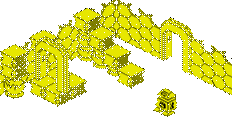Acorn Atom
Vital Statistics
Introduced
1981 |
|
![]()
What's it like today?
|
Acorn introduced the Atom following the amalgamation of efforts from several of their previous machines: Systems 2 through 4A. It used a standard TV or an optional monitor for its video output, and was capable of 4 colours on screen or a monochrome mode which provided higher graphics resolution. As was common at the time, the Atom used an audio cassette interface for loading and saving of programs.
It is thought that the Atom development was started when Chris Curry discovered Sinclair's plans for the home consumer market with their ZX80 machine. Despite others in Acorn who considered the company's future to be largely in the laboratory equipment market, Curry believed Sinclair was onto something with their market steer. To this end, Curry commissioned industrial designer Allen Boothroyd to create a suitable case with keyboard into which they could put an Acorn System 3.
In March 1980 the Atom was revealed at a computer show, demonstrating its capabilities including the Econet network, with 8 Atoms networked together, able to share files, and screens to be remotely viewed.
Over the next two years the Atom met with an emerging retail home computer market, but Acorn also sold it as OEM to several businesses.
An optional 4K floating point chip upgrade could be purchased allowing up to 16K of RAM for BASIC or Assembler programs. Due to the upgradability of the hardware, many accessories were later available, including a Disk Pack that provided the Atom with floppy disk support, as seen in the System 3. It was succeeded in 1983 by Acorn's far superior BBC Micro.
In 1982 after the launch of the Acorn BBC Micro, they released a ROM upgrade that would allow the user to switch from Atom BASIC to the more advanced BBC Micro's Basic. This increased the number of commands and syntax for BASIC programmers, but since no other upgrades were made to the Atom's hardware, you still could not run most commercial BBC Micro programs on the Atom.
Acorn ceased production of the Atom in 1983.
This page was last updated on 17th January 2015.














